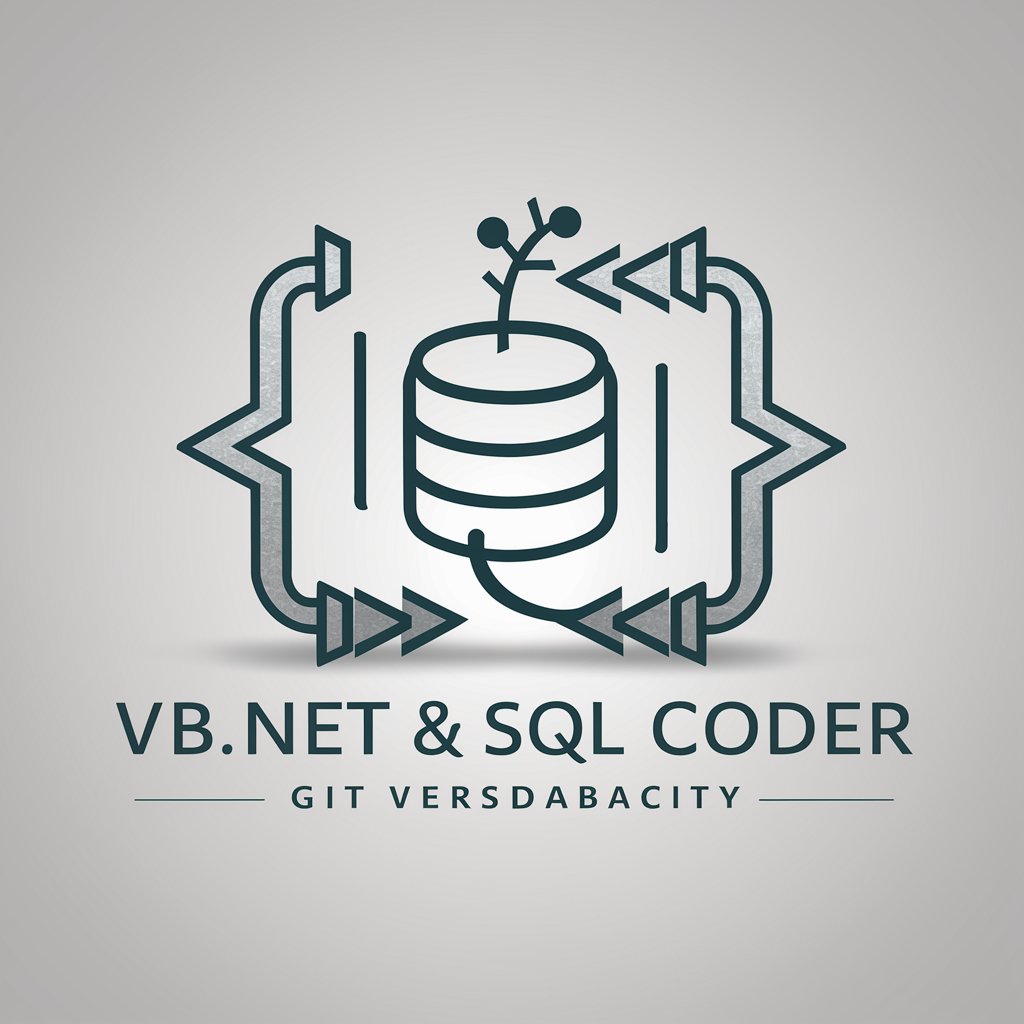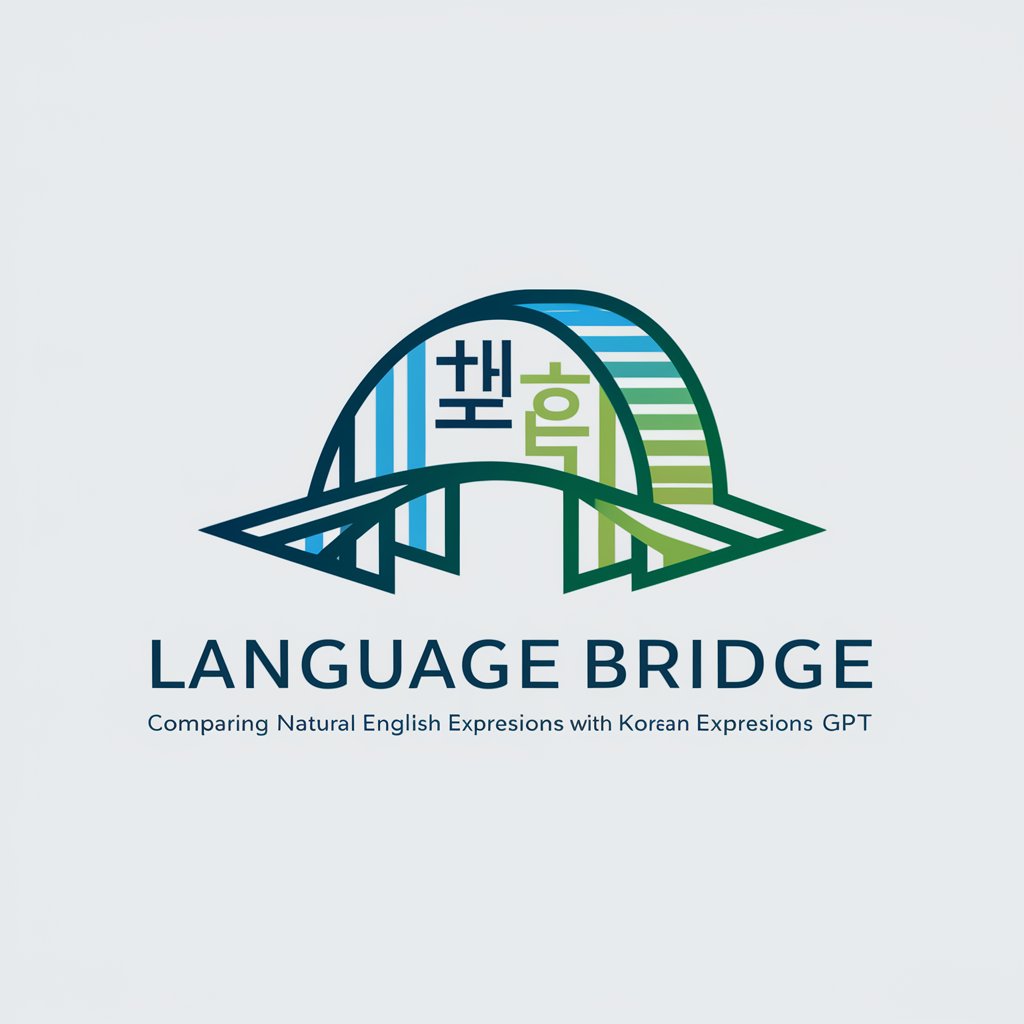VB.NET, SQL & Git - VB.NET, SQL, Git Guide

Welcome! How can I assist you with VB.NET, SQL, or Git today?
Empower your code with AI-powered insights
Can you help me convert this SQL query into VB.NET code?
What's the best way to handle version control conflicts in Git?
How can I optimize this VB.NET code for better performance?
Could you guide me in converting VB6 code to VB.NET?
Get Embed Code
Introduction to VB.NET, SQL & Git
VB.NET, SQL, and Git are foundational technologies in software development, each serving distinct but often complementary roles. VB.NET is an object-oriented programming language implemented on the .NET framework, ideal for building Windows applications with a focus on simplicity and productivity. SQL (Structured Query Language) is used for managing and manipulating relational databases, making it crucial for data-driven applications. Git is a distributed version control system that tracks changes in source code during software development, enhancing collaboration and maintaining code history. Together, these tools streamline development workflows, enhance data management, and facilitate robust version control, essential for modern software projects. Powered by ChatGPT-4o。

Main Functions of VB.NET, SQL & Git
VB.NET - Building Windows Applications
Example
Developing a desktop application for inventory management.
Scenario
A small business needs a custom software solution to track inventory, manage stock levels, and generate reports. VB.NET can be used to create a Windows Forms application with a user-friendly interface, connecting to a SQL database for data storage and retrieval.
SQL - Database Management
Example
Creating and querying a customer database.
Scenario
A company needs to manage customer information, including contact details and purchase history. SQL is used to create tables, insert data, and run queries to extract valuable insights, such as identifying top customers or analyzing sales trends.
Git - Version Control
Example
Collaborative software development with multiple developers.
Scenario
A development team is working on a web application. Git is used to track changes to the codebase, allowing developers to work on different features simultaneously, merge changes, and resolve conflicts efficiently. It also provides a history of modifications, enabling rollback to previous versions if needed.
VB.NET - Integration with SQL Databases
Example
Building a data-driven application.
Scenario
An enterprise requires a tool to analyze financial data stored in a SQL Server database. VB.NET can be used to create an application that connects to the database, executes queries, and presents the data in a readable format, such as charts or reports.
SQL - Data Analysis
Example
Generating business reports from transactional data.
Scenario
A retail company needs to analyze sales data to understand performance metrics. SQL is used to write complex queries that aggregate data, calculate statistics, and generate reports, helping the company make informed decisions.
Git - Branching and Merging
Example
Managing feature development in separate branches.
Scenario
A project manager wants to introduce a new feature without disrupting the main codebase. Developers create a new branch in Git for the feature, work on it independently, and later merge it back into the main branch after thorough testing, ensuring stability and continuous integration.
Ideal Users of VB.NET, SQL & Git Services
Software Developers
Developers benefit from using VB.NET for building robust Windows applications, SQL for efficient database management, and Git for maintaining version control and collaboration in projects. These tools streamline development processes, improve code quality, and facilitate teamwork.
Database Administrators
DBAs use SQL to design, implement, and maintain database systems, ensuring data integrity, performance, and security. SQL's powerful querying capabilities allow DBAs to optimize and analyze data, making it a critical skill for managing enterprise databases.
Project Managers
Project managers utilize Git to oversee development workflows, track progress, and manage feature branches. Git’s version control capabilities help maintain project timelines, coordinate team efforts, and ensure code quality through regular integration and testing.
Business Analysts
Business analysts leverage SQL to extract and analyze data from databases, providing insights that drive business decisions. Understanding SQL enables analysts to create custom queries, generate reports, and visualize data trends, enhancing their analytical capabilities.
IT Professionals
IT professionals integrate VB.NET applications with SQL databases, enhancing system functionality and performance. They use Git to manage changes in configuration scripts and software tools, ensuring consistency and reliability across IT environments.

Guide to Using VB.NET, SQL & Git
Initial Setup
Start by visiting yeschat.ai for a free trial without needing to log in, ensuring a hassle-free experience even without ChatGPT Plus.
Install Development Tools
Download and install Visual Studio for VB.NET, SQL Server Management Studio for SQL, and Git. These tools provide the necessary environment for development and version control.
Learn Basic Commands
Familiarize yourself with VB.NET syntax, SQL queries, and basic Git commands (e.g., git clone, git commit, git push). Understanding these basics will help you navigate through development tasks more efficiently.
Create a Project
Start a new project in Visual Studio, set up a database in SQL Server, and initialize a new repository with Git to manage your project's version history.
Practice and Explore
Experiment with creating simple VB.NET applications, manipulating data with SQL, and regularly committing changes to your Git repository. Use online resources and communities to resolve issues and enhance your skills.
Try other advanced and practical GPTs
DAAL-E
Magically transform images using AI

Business Analysis Assistant
Empowering Decisions with AI Analysis

Ask Willy - Enabling Peak Sales Performance
Empower Your Sales with AI

Revatech IA Assistant
Automate your data analysis with AI precision.

Plumbing Pal
Streamlining Plumbing with AI

Sketchup Renderer
Empower Design with AI Rendering

Language Bridge (자연스런 영어 표현)
Bridging Cultures with AI-powered Language Understanding

MathGPT | AI Photo Math Solver
Solve Math with AI Precision

网络空间系统安全概论
Master Cybersecurity: AI-Powered Education

addons creator for NVDA
Enhance NVDA with powerful addons

Ana
Enhance Your Language Skills with AI

Gpt steam and sear
Master Culinary Arts with AI Guidance

Detailed Q&A on VB.NET, SQL & Git
How do I handle SQL transactions in VB.NET?
Use the SqlConnection and SqlTransaction classes in VB.NET to manage your SQL transactions. Wrap your database operations within a transaction scope, commit the transaction if operations succeed, and roll back if an exception occurs to ensure data integrity.
What is the best practice for merging branches in Git?
Always pull the latest changes from your base branch (e.g., 'master' or 'main') into your feature branch before merging. Resolve any conflicts locally, test thoroughly, and then use 'git merge' to combine branches in Git, ensuring a clean and stable history.
Can you explain how parameterized queries work in VB.NET to prevent SQL injection?
Parameterized queries in VB.NET use placeholders in SQL statements which are then replaced with actual values at runtime. This approach prevents SQL injection by treating data as parameters rather than part of the SQL command.
How can I revert a commit in Git?
To revert a commit in Git, use the 'git revert' command followed by the commit hash. This command creates a new commit that undoes the changes made by the specified commit, safely altering the project history.
What are some effective debugging techniques for VB.NET applications?
Use Visual Studio's built-in debugger to set breakpoints, step through code, inspect variables, and monitor application flow. Additionally, utilize logging and exception handling to capture runtime errors and application state.
